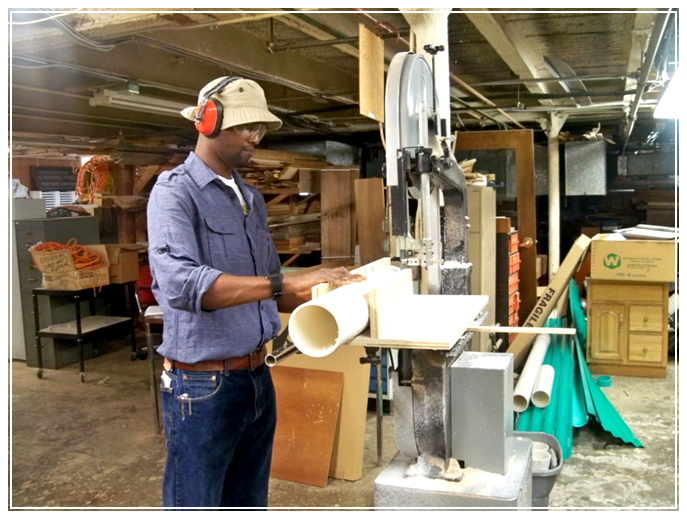You are here
Soil carbon dynamics and its controls at Harvard Forest
Like plants and animals, soils “breathe.” That is, the microbes and roots found in dirt release carbon dioxide as they respire, and then the CO2 diffuses its way into the atmosphere. Our project focuses on the rate of this diffusion, or the CO2 flux, because we hope to better understand processes that affect the storage and release of CO2 in soils. Whether the net flux is positive or negative will greatly impact future climate change, so understanding soil carbon dynamics is an integral part of understanding climate change. Interestingly, the amount of carbon found in soils is double that in the atmosphere, and double that in terrestrial vegetation. In order to measure the rate of diffusion of CO2 from soil to the atmosphere, we use a LI-COR machine. If the concentration of CO2 in the air is much lower than the concentration of CO2 in the soil, then there is a higher flux; if the difference is less pronounced, then there is a lower flux. Therefore, it is important that the LI-COR sensor not allow CO2 to build up in the chamber, because doing so would make the flux measurement too low.
Interestingly, the amount of carbon found in soils is double that in the atmosphere, and double that in terrestrial vegetation. In order to measure the rate of diffusion of CO2 from soil to the atmosphere, we use a LI-COR machine. If the concentration of CO2 in the air is much lower than the concentration of CO2 in the soil, then there is a higher flux; if the difference is less pronounced, then there is a lower flux. Therefore, it is important that the LI-COR sensor not allow CO2 to build up in the chamber, because doing so would make the flux measurement too low.
The manipulation sites are exactly what their names suggest—spots where some variable has been manipulated to represent a change in the environment. The “nitrogen addition” plots simulate mankind’s use of fertilizers (commonly used in agriculture etc); the air-warming sites simulate an increase in air-temperature due to global climate change (temperatures based on projected trends); the DIRT site stands for “Detritus Input and Removal Treatments (detritus is essentially rotting material on the forest floor);” the Ant site is where an ant colony has been added to the soil sample (ants are considered detritivores; meaning they break up organic material); and trenching sites are where all the roots have been removed from the soil samples (because roots hold soil together, lessening erosion). By comparing respiration rates at control collars to those at manipulated collars, we will be able to assess the impact of these anthropogenic, biotic, and abiotic variables on soil respiration. The other type of site consists of the gradient plots. These are collars spread all over the Prospect Hill area, each representing a combination of soil type and tree type. Finding all 58 gradient plots was a lengthy process that involved using a GPS device and multiple maps. Once we found a site, we proceeded to save the GPS coordinates to create an updated GIS map of all the sample sites using ArcMap software. We use the gradient measurements to better understand the variation in soil respiration across different vegetation and soil types. Plus, we hope to use the data from the air-warming manipulation site to induce what effect a global increase in air-temperature would have on soil respiration in the Prospect Hill area.
The other type of site consists of the gradient plots. These are collars spread all over the Prospect Hill area, each representing a combination of soil type and tree type. Finding all 58 gradient plots was a lengthy process that involved using a GPS device and multiple maps. Once we found a site, we proceeded to save the GPS coordinates to create an updated GIS map of all the sample sites using ArcMap software. We use the gradient measurements to better understand the variation in soil respiration across different vegetation and soil types. Plus, we hope to use the data from the air-warming manipulation site to induce what effect a global increase in air-temperature would have on soil respiration in the Prospect Hill area.
Stay tuned for updates!

